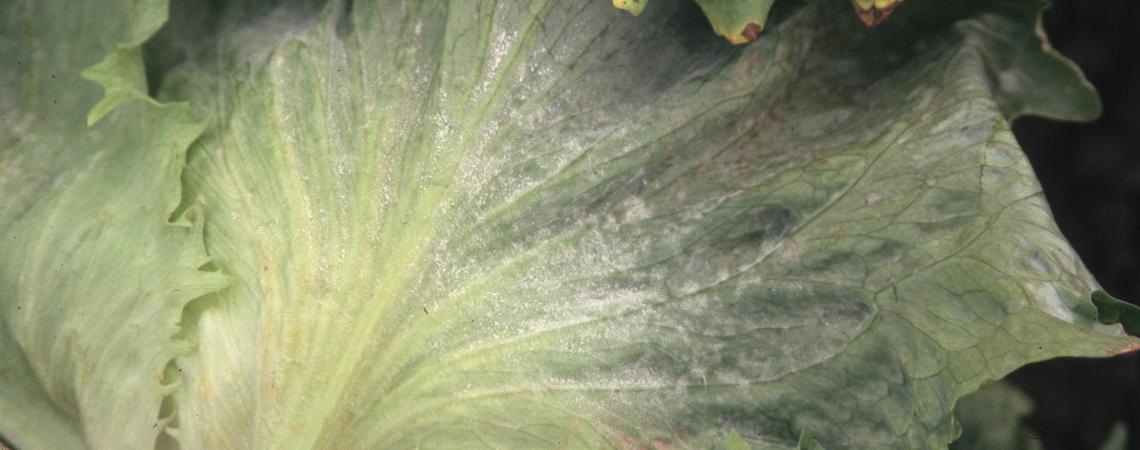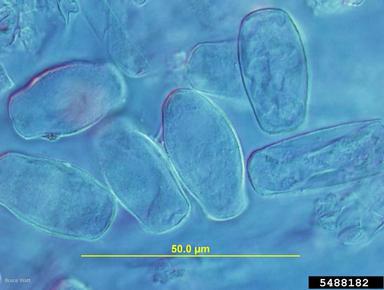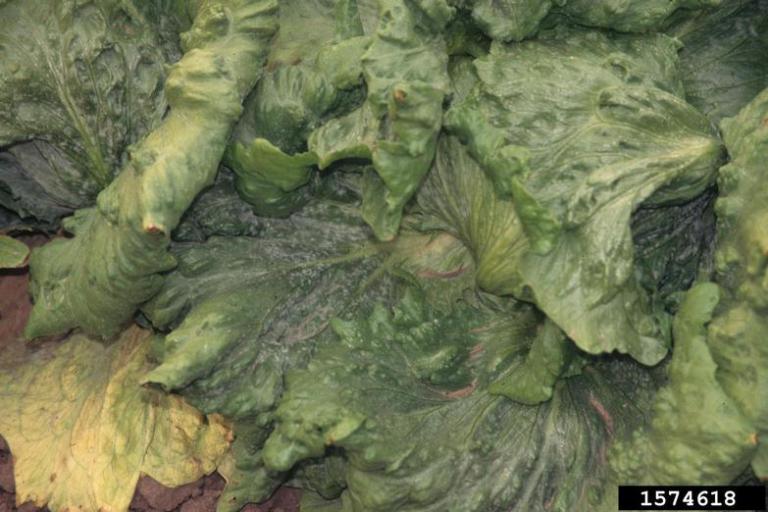
Powdery Mildew
On this page
Connected Pages
Powdery mildew of lettuce is one of the most common diseases of lettuce and occurs everywhere lettuce is produced. The disease is characterized by a white powdery appearance on the upper leaf surfaces and the wrapper leaves in crisphead lettuce. In advanced infections, both the upper and lower leaf surfaces are affected and the leaves can take on a deformed and buckled appearance. The disease will rarely kill the lettuce plant but because of the cosmetic damage, the head will be unmarketable. The disease is very a common problem in greenhouse production, when ambient moisture may be higher and more constant than that in field production. Under such conditions, if robust management programs are not in place, a disease epidemic can quickly damage an entire production run.
Causal Agent
The disease is caused by the fungus Golovinomyces cichoracearum, which has a relatively wide host range compared to other powdery mildew fungi, encompassing many members of the plant families Asteraceae, Cucurbitaceae, and Solanaceae. The fungus is known as a biotroph, which means it needs living host tissue to survive. Once the host tissue is dead, the fungus must infect new host tissue to survive. The fungus grows on the epidermis of the host and does not penetrate deeply into plant tissue. Growth is favored by warm, relatively dry conditions. However, some relative humidity is required for disease development. Under such conditions, the fungus can produce millions of spores on the leaf surface and these spores are easily wind-borne to create new infections on neighboring plants. Under the right conditions, epidemics can be explosive and careful disease management is required to prevent such events.

Management Practices
Cultural Control
There are a few cultural practices that are used for powdery mildew management. Overhead sprinkler irrigation is effective in reducing the incidence of disease by washing off spores prior to germination, but the additional leaf wetness exacerbates other plant diseases. Cooler weather reduces the incidence of disease and there is generally less disease in cooler coastal growing regions than interior and desert production areas.
Chemical Control
There are a number of fungicides that are effective against powdery mildew of lettuce. Sulfur has been used for centuries to control powdery mildew on a number of crops. Care must be taken to not apply during warm weather (>90F within 3 days of application) or else phytotoxicity may result. Azoxystrobin and myclobutanil are commonly used along with other products. For information on product efficacy in desert production systems, refer to a recent study by Matheron and Porchas. Before using any product to control powdery mildew on lettuce, check product labels and restrictions and consult with your local Extension Specialists and Pest Control Advisers. Additionally, all product use should be accompanied by a robust program for fungicide resistance management.
Biological Control
Several biological fungicides are commercially available for the control of powdery mildew of lettuce and other hosts. Most are formulations of bacterial species such as Bacillus spp., which perform as fungal parasites. These products are generally regarded as safe for common use, however, they have not been shown to be as effective as other products such as sulfur or oils.

Breeding for Resistance
There are considerable ongoing efforts to develop resistance to powdery mildew in lettuce cultivars. With more resources available from the recent genomic characterization of lettuce germplasm, it is expected that breeding efforts will expand. Generally, very low resistance is observed across crisphead-type lettuces, while the highest relative resistance is recorded in leaf and butterhead types.
Publications & Links
